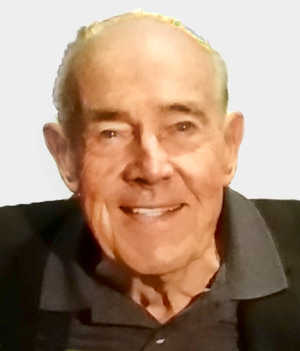
LAKE COUNTY, Calif. – The last ice age, several thousand years ago, dropped the ocean and allowed the Bering Strait to become a land 1,000 miles wide.
From Asia they came; the First Americans. These men followed the herds across this desolate terrain to North America.
They were a handsome race, varying from five and a half to six feet in height. Hardy people, these first Native Americans shared that world with saber-tooth cats, giant bears and mammoths.
Came a warmer time in what would become Lake County. With the warmth came rain. No longer did the pines and cypress hold court all the way to Clear Lake’s shores. Oaks and chaparral had their day and covered the land.
The transition was swift. By comparison, with the eons it had taken the planet’s heaving tectonic plates to settle down, the last 200 centuries were but a speck of geological time.
The glaciers melted and the oceans rose. Unmolested, the Amerinds prospered besides the shores of Clear Lake. The climate had cold wet winters and hot dry summers.
The first Americans were tool makers. They made stone mills to grind acorns and seeds for meal and bread. They chipped obsidian to make their spearheads for their darts and spears. They made weapons; axes, bows and arrows, spears. They used native copper, animal bone, flint, obsidian and stone. The shorter throwing spear was accurate to 100 feet.
They hooked, harpooned, and netted fish. Made from the reeds of the tule that grew in abundance around Clear Lake, inhabitants became the finest basket weavers in North America. Basketry gave the Indians pots and dishes.
To keep warm through the wet Lake County winters, they wore animal skins and kept fires burning in their wickiups and huts of reeds. They prospered and grew in numbers.
Five thousand years ago Cow Mountain’s southern face fell away. The massive landslide covered the land where Highway 20 runs today. The river channel from Clear lake to the Russian River was blocked.
Clear Lake’s on-again, off-again romance between the Sacramento River and the Russian River ended abruptly and the Lake rose higher than a six-story building. Time and erosion cut a new outlet and Clear Lake flowed with a rush through Cache Creek and into the Sacramento River once more.
There was trading. The first Americans invented a medium of exchange: bead money.
Elephant ear clam shells, found along the coast, used as currency, was called “white money.” Valued according to size, the shells were cut into buttons or discs and strung on a string of the inner bark of one of the milkweed plants.
Red-backed ear shells were Indian bills and coins of currency. According to size, they were worth, in present day coinage, anywhere from a nickel to a dollar each.
Around the shores of Clear Lake there was plenty. Pomo, Yuki, and Miwok lived there. Villages were run by “captains.” There was a class structure and some Amerinds were wealthier than others.
The “tule potato,” roots of the tule reed, furnished nutrients. There were acorns, seeds and a score of edible plants. There was no need for agriculture as it was in other places in the world.
Fish, along with clams, shell fish and mussels, were plentiful. The hills and woods above the lake were filled with deer, bears, and other game. The lakes had fish and fowl. Ducks were caught with slings and skipping stones thrown with such accuracy a single stone could strike several birds.
By 1500 AD the native population of Northern California had grown to more than a third of a million people.
There was light snow in winter and the weather was mild. The land was covered with pine and cypress. As the marshy land around the lake dried, oaks and chaparral appeared.
The groups and tribes remained small and lived separately several miles apart around Clear Lake. Trails to the sea let them travel far for trading, to hunt and to gather salt.
Then came a new and more difficult time for the first Americans. In 1600 AD other men came to the Northern California Coast; first the Spanish, then the Mexicans, and finally, the Americans.
All of them brought the unwelcome baggage of civilization; smallpox, pollution, and genocide. By the turn of the century, 1900, only a fraction the one-time great numbers of Native Americans, that once covered California, was only a memory.
Came a sorry peace to Lake County at last. After a 140 million years, time had run its course.
Under the watchful eye of mighty Konocti, the red mountain continued to stand guard over Clear Lake.
All was still at last ... but the fire beneath our beds did not sleep and some silent night we may yet be wakened from our slumber.
Next time: The discovery of Clear Lake.
Author, storyteller and illustrator Gene Paleno lives in Witter Springs. He is author of “Lake County History: A Mystical Adventure in Time.” The book costs $32, including tax and shipping, and is available through Pal Publishing, P.O. Box 6, Upper Lake, Ca 95485. Contact Paleno at This email address is being protected from spambots. You need JavaScript enabled to view it. or visit his Web site, www.genepaleno.com .

 How to resolve AdBlock issue?
How to resolve AdBlock issue? 





